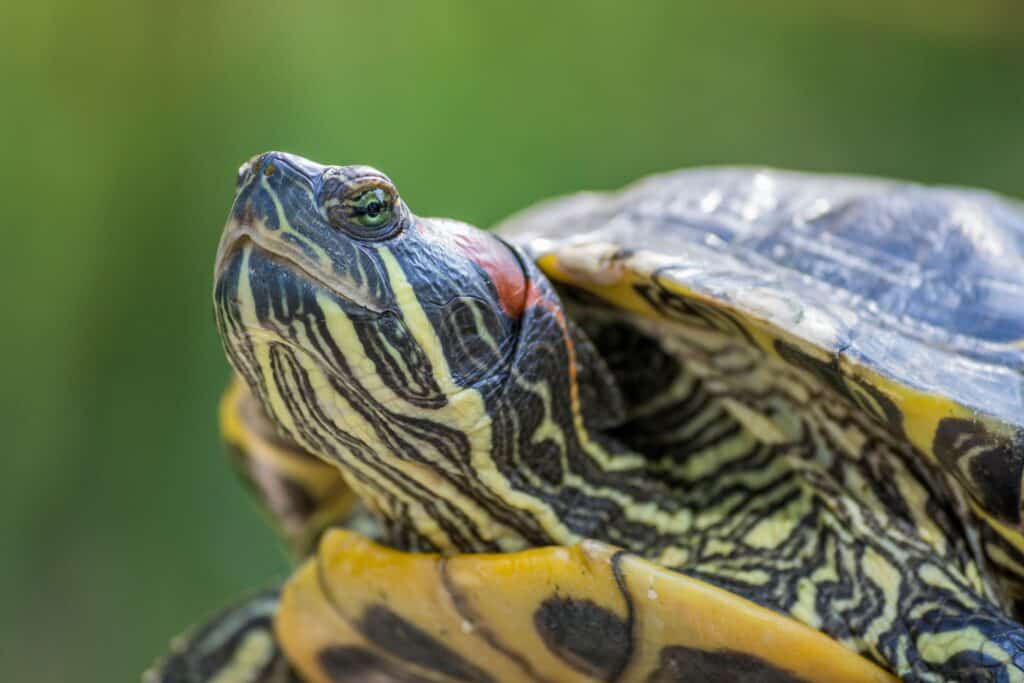Pet turtles can make great companions, but before you bring one home, it’s important to consider the cost of caring for them. In this article, we’ll break down the costs of getting a turtle, including the initial purchase price, ongoing expenses, and potential veterinary costs.
Initial Purchase Price
The initial purchase price of a turtle can vary widely depending on the species and where you buy it. Here are some average prices to expect:
- Red-Eared Sliders: $10-$30
- Box Turtles: $50-$200
- Russian Tortoises: $100-$300
- African Spurred Tortoises: $100-$600
- Common Snapping Turtle: $50-$100
- Common Painted Turtle: $10-$20
- Musk Turtle: $20-$40
- Common Wood Turtle: $50-$150
- Albino Red-Eared Slider: Varies widely – possibly >$1,000
- Albino Snapping Turtle: Varies widely – possibly >$1,000
It’s important to note that prices for turtles can vary greatly depending on the location, and some species may be more expensive in certain areas. Additionally, captive-bred turtles are often more expensive than wild-caught turtles, but they are also more likely to be healthy and well-adjusted to captivity. Some albino turtle can be hard to find and thus more expensive.

Ongoing Expenses
Turtles require a specific environment and diet to thrive, and these ongoing expenses can add up over time. Here are some of the costs to consider:
- Tank or enclosure: $50-$200, depending on the size and type.
- Lighting: $20-$50.
- Substrate: $10-$20.
- Food: $5-$20 per month, depending on the type of turtle and its diet.
- Heat Lamp: $10-$20
- UVB Light: $20-$40
It’s also important to note that, as with any pet, there may be unexpected expenses that come up from time to time. For example, you may need to replace a piece of equipment or pay for a veterinary visit if your turtle becomes sick.
Choosing a Tank for your Pet Turtle
When it comes to keeping a pet turtle, one of the most important things to consider is the turtle’s living space, or tank. Here are some things to keep in mind when choosing a tank for your pet turtle:
- Size: Turtles need plenty of space to swim and move around, so it’s important to choose a tank that is large enough to accommodate your turtle. As a general rule, the tank should be at least four times the length of the turtle.
- Water: Most turtles need a water area where they can swim, so the tank should have a water area that is at least as deep as the turtle is long.
- Land: Turtles also need a land area where they can rest and bask, so the tank should have a land area that is at least as long as the turtle.
- Filtration: Turtles produce a lot of waste, so it’s important to choose a tank that has a good filtration system to keep the water clean.
- Lighting: Turtles need UVB lighting to help them absorb calcium and maintain healthy shells.
- Heating: Turtles need a warm environment, so the tank should have a heating element to keep the water at the appropriate temperature.
Some of the top-rated turtle tanks include:
- Zoo Med Turtle Tub: This tank is specifically designed for turtles and offers a shallow water area and a large land area. It also includes a built-in filtration system and UVB lighting.
- Fluval Spec III: This tank is a great option for small turtles, it is a compact tank that includes a filtration system, heating element, and LED lighting.
- Exo Terra Natural Terrarium: This tank is a great option for larger turtles, it offers a large water and land area, as well as a built-in filtration system and UVB lighting.
- Aqueon Turtle Tank: This tank is a great budget-friendly option, it offers a large water and land area and includes a built-in filtration system and heating element.
When it comes to choosing a tank for your pet turtle, it is important to consider the size, water, land area, filtration, lighting, and heating. It is also important to research and choose a tank that is appropriate for the size and species of your turtle.
Veterinary Costs
Turtles can live for many years, and they may require veterinary care at some point during their lives. Here are a few costs to keep in mind:
- Initial exam: $50-$100.
- Vaccinations: $20-$50.
- Blood work and tests: $100-$200.
- Medications: $50-$100.
It’s important to note that the cost of veterinary care can vary widely depending on where you live and the specific needs of your turtle. Additionally, some species of turtles may be more prone to certain health issues than others, so it’s important to research the specific needs of the species you’re considering before making a decision.
Comparison of different turtle species

Here is a comparison of different turtle species, including information on their initial purchase price, ongoing expenses, care and maintenance needs, lifespan, size, and legal considerations.
|
Species |
Initial Purchase Price |
Ongoing Expenses |
Care and Maintenance |
Lifespan |
Size |
Legal considerations |
|---|---|---|---|---|---|---|
|
Red-Eared Sliders |
$10 to $30 |
$50-$100/year |
Moderate |
20-30 years |
Medium |
No specific legal consideration |
|
Box Turtles |
$50-$200 |
$50-$100/year |
Moderate |
30-50 years |
Medium |
Some states may require a permit |
|
Russian Tortoises |
$100-$300 |
$50-$100/year |
Low |
40-60 years |
Large |
No specific legal consideration |
|
African Spurred Tortoises |
$100-$600 |
$50-$100/year |
Low |
60-80 years |
Very Large |
No specific legal consideration |
|
Common Snapping Turtle |
$50-$100 |
$50-$100/year |
Moderate |
20-30 years |
Large |
No specific legal consideration |
|
Common Painted Turtle |
$10-$20 |
$50-$100/year |
Moderate |
20-30 years |
Medium |
No specific legal consideration |
|
Musk Turtle |
$20-$40 |
$50-$100/year |
Low |
20-30 years |
Small |
No specific legal consideration |
|
Common Wood Turtle |
$50-$150 |
$50-$100/year |
Moderate |
20-30 years |
Medium |
Some states may require a permit |
|
Albino Red-Eared Slider |
Varies Widely – Possibly >$1000 |
$50-$100/year |
Moderate |
20-30 years |
Medium |
No specific legal consideration |
|
Albino Snapping Turtle |
Varies Widely – Possibly >$1000 |
$50-$100/year |
Moderate |
20-30 years |
Large |
No specific legal consideration |
It’s important to note that prices for turtles can vary greatly depending on the location, and some species may be more expensive in certain areas. Additionally, captive-bred turtles are often more expensive than wild-caught turtles, but they are also more likely to be healthy and well-adjusted to captivity. Some albino turtle can be hard to find and thus more expensive.
The 4-inch Law in the United States
The 4-inch law is a federal law in the United States that is enforced by the Food and Drug Administration (FDA). It applies to all states and territories in the United States. However, it is important to note that some states or municipalities may have their own regulations that are stricter than the 4-inch law. It is essential to research and be aware of the turtle laws in your area before making a purchase or acquiring a turtle.
The 4-inch law states that it is illegal to sell, offer for sale, or distribute any turtle with a carapace (shell) length of less than 4 inches. This law applies to all species of turtles, including land and water turtles, and applies to all types of sales, including pet stores, flea markets, and online sales.
The main reasoning behind this law is that turtles with a carapace length of less than 4 inches are more likely to carry Salmonella and can be a greater risk to human health. By eliminating the sale of small turtles, the law aims to reduce the risk of Salmonella infections associated with turtles.
It’s important to note that the 4-inch law only applies to the sale and distribution of turtles, it does not apply to possession. This means that if you already own a turtle that is less than 4 inches in length, you are not required to give it up or get rid of it.
It is also worth noting that some states and municipalities may have their own regulations that are stricter than the 4-inch law. It is essential to research and be aware of the turtle laws in your area before making a purchase or acquiring a turtle.
In summary, the 4-inch law is a federal law in the United States that prohibits the sale, distribution, and offer for sale of turtles with a carapace length of less than 4 inches to protect the public from the spread of Salmonella. It is essential to be aware of this law and any additional regulations in your area before making a purchase or acquiring a turtle.
Related: Easy DIY Tortoise Enclosure
Care and Maintenance

The care and maintenance needs of turtles can vary depending on the species. Here are a few things to keep in mind:
- Diet: Some turtle species are strictly carnivorous, while others are herbivorous or omnivorous. It’s important to research the specific dietary needs of the turtle species you’re considering and to provide a diet that meets those needs.
- Habitat: Turtles require a specific environment to thrive. This can include a tank or enclosure, substrate, lighting, and heat sources. It’s important to research the specific habitat needs of the turtle species you’re considering and to provide an environment that meets those needs.
- Health concerns: Some turtle species are more prone to certain health concerns than others. For example, some turtles may be more susceptible to shell rot or respiratory infections. It’s important to research the specific health concerns of the turtle species you’re considering and to take steps to prevent and manage those concerns.
Lifespan and Size
The lifespan and size of turtles can vary depending on the species. Here are a few things to keep in mind:
- Lifespan: Some turtle species can live for 20-30 years or more, while others have a shorter lifespan. It’s important to research the lifespan of the turtle species you’re considering and to make sure you’re prepared for the long-term commitment.
- Size: Some turtle species can grow quite large, while others stay relatively small. It’s important to research the size of the turtle species you’re considering and to make sure you have an appropriate habitat that can accommodate them as they grow.
Legal considerations
Before getting a turtle as a pet, it’s important to familiarize yourself with any legal considerations that come with owning one. Some states and municipalities may have laws or regulations governing the possession of certain turtle species, or may have permit requirements for owning certain turtles. Additionally, some turtle species may be protected under state or federal law, and it may be illegal to collect or keep them as pets. It’s important to research the specific laws and regulations in your area and to ensure that you’re in compliance with them.
Fun facts
Turtles are fascinating creatures and here are a few fun facts:
- Some turtle species can live on land and water, while others are strictly aquatic.
- Some turtle species have a hard, protective shell, while others have a soft shell.
- Some turtle species can swim at high speeds, while others move slowly on land.
- Some turtle species are strictly diurnal, while others are nocturnal.
- Some turtle species are solitary, while others are social.
Conclusion
Turtles can make great pets, but it’s important to do your research and be prepared for the long-term commitment. Factors to consider include initial purchase price, ongoing expenses, veterinary costs, care and maintenance needs, lifespan, size, and legal considerations. By understanding the specific needs of different turtle species and making sure you can provide for those needs, you can ensure that your pet turtle will have a happy and healthy life.






